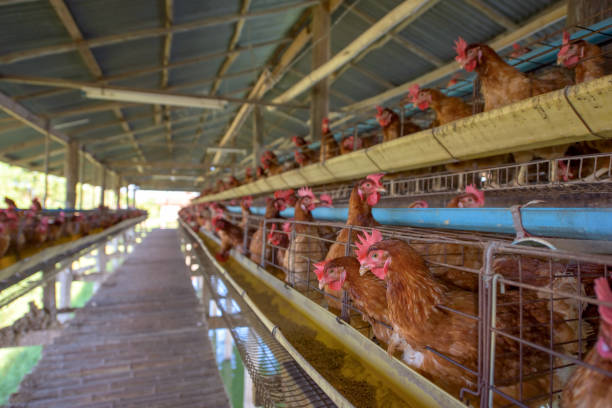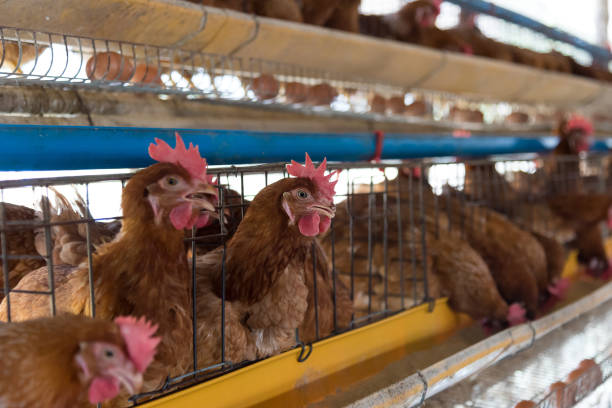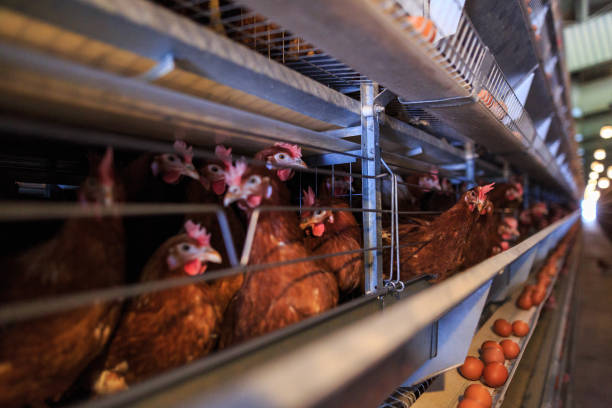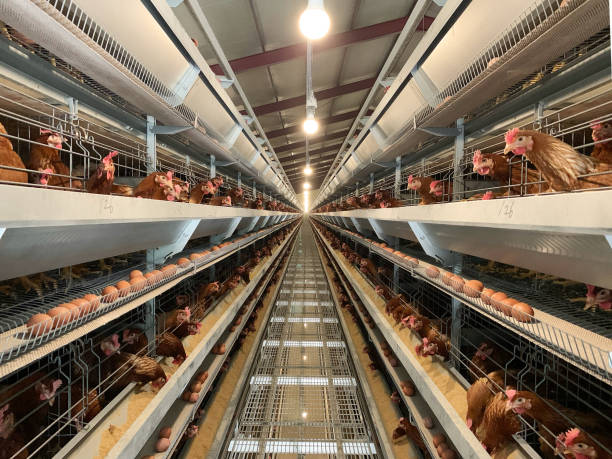
Profitable Layer Farming in Pakistan: Developing Your Business Plan
Profitable Layer Farming in Pakistan: Developing Your Business Plan
Pakistan’s poultry industry is a significant contributor to the national economy, and layer farming, or raising chickens for egg production, is a prominent part of it. With a growing population and increasing demand for eggs, layer farming presents a viable and potentially profitable business opportunity. However, success in this sector requires careful planning and a well-structured business plan. This article provides a comprehensive guide to developing a business plan for a profitable layer farming venture in Pakistan.
Understanding the Pakistani Layer Farming Landscape
Before diving into the business plan, it’s essential to understand the landscape of layer farming in Pakistan. Several factors influence the profitability and success of a layer farm:
Market Demand: Egg consumption is relatively high in Pakistan and continues to grow. Understanding the market dynamics in your region is crucial. Identify your target market, including individual consumers, restaurants, bakeries, and wholesale distributors.
Competition: The layer farming industry in Pakistan is competitive. Research the number of existing farms in your area and analyze their strengths and weaknesses. Identify your competitive advantage, such as producing high-quality eggs, offering competitive pricing, or specializing in a specific niche (e.g., organic eggs).
Government Policies: The government of Pakistan, through various agricultural programs and incentives, supports the poultry industry. Stay informed about relevant policies, subsidies, and regulations that may affect your business.
Input Costs: Feed constitutes the largest expense in layer farming. Fluctuations in feed prices can significantly impact profitability. Other essential inputs include chicks, medications, vaccines, and electricity.
Disease Management: Poultry diseases can cause significant economic losses. Implementing a robust biosecurity and disease management program is critical for success.
The Importance of a Business Plan
A business plan serves as a roadmap for your layer farming venture. It outlines your goals, strategies, and how you plan to achieve them. A well-developed business plan is essential for securing funding, attracting investors, and guiding your operational decisions.
Key Components of a Layer Farming Business Plan in Pakistan
Here’s a breakdown of the key components that should be included in your layer farming business plan:
Executive Summary:
This is a brief overview of your entire business plan. It should highlight the key aspects of your venture, including your mission statement, objectives, and financial projections.
Clearly state what your layer farm aims to achieve and how it will be different from existing farms.
Mention your key target markets and what makes you unique. For example, are you focusing on organic eggs or offering a specific breed known for high production?
Company Description:
Provide detailed information about your company, including its legal structure (sole proprietorship, partnership, or private limited company), ownership, and management team.
Include the background and experience of the key personnel involved in the business. This is crucial for building investor confidence.

Mention any relevant certifications or affiliations you have, such as membership in poultry associations.
Market Analysis:
Conduct thorough market research to understand the demand for eggs in your target region.
Analyze the competitive landscape, identifying your main competitors and assessing their strengths and weaknesses.
Identify your target market segments and their specific needs and preferences. Conduct surveys or interviews to gather data on consumer preferences for egg size, color, and price.
Explain how your farm will differentiate itself from the competition. Will you focus on quality, price, or a niche market?
Describe how you plan to promote and distribute your eggs. Will you sell directly to consumers, retailers, or wholesalers?
Products and Services:
Describe the types of eggs you plan to produce (e.g., brown eggs, white eggs, organic eggs, desi eggs).
Specify the breeds of layer chickens you will raise and their expected egg production rates. Consider breeds known for their adaptability to the Pakistani climate and disease resistance. Common breeds include Lohmann Brown, Hy-Line Brown, and Bovans Brown.
Outline any additional products or services you may offer, such as processed egg products (e.g., boiled eggs, pickled eggs), manure for fertilizer, or day-old chicks.
Production Plan:
Detail the physical infrastructure of your farm, including the size and layout of the poultry houses, feeding and watering systems, and waste management system. Using layer cages will allow you to maximize space.
Specify the equipment you will need, such as feeding troughs, waterers, egg collection systems, and ventilation equipment.
Outline your biosecurity measures to prevent disease outbreaks. This includes strict hygiene protocols, vaccination programs, and pest control measures.
Develop a detailed feeding schedule for your layer chickens, specifying the types of feed and the amount to be provided at different stages of their life cycle.
Describe your egg collection, grading, and packing procedures.
Explain your waste management plan, including how you will dispose of manure and other waste materials in an environmentally friendly manner.
Management Plan:
Describe the organizational structure of your farm and the roles and responsibilities of each member of your management team.
Specify the number of employees you will need, including farm managers, poultry workers, and sales and marketing staff.
Outline your employee training programs and how you will ensure that your staff has the necessary skills and knowledge to perform their jobs effectively.
Describe your record-keeping procedures, including how you will track egg production, feed consumption, mortality rates, and other key performance indicators.
Marketing and Sales Plan:

Describe your marketing strategy, including how you will promote your eggs to your target market.
Outline your pricing strategy, considering factors such as production costs, market prices, and competitor pricing.

Identify your distribution channels, such as direct sales to consumers, sales to retailers, and sales to wholesalers.
Develop a sales forecast, projecting the volume of eggs you expect to sell each month or year.
Explain how you will build relationships with your customers and ensure their satisfaction.
Financial Plan:
Prepare a detailed financial plan, including a start-up budget, operating budget, and cash flow projections.
Estimate the total cost of starting your layer farm, including the cost of land, buildings, equipment, chicks, feed, and other inputs.
Project your revenue based on your sales forecast and the expected price of eggs.
Calculate your operating expenses, including the cost of feed, labor, utilities, and medications.
Develop a cash flow projection, showing the flow of cash into and out of your business over a given period.
Prepare a profit and loss statement, showing your expected profits or losses over a given period.
Calculate your break-even point, the point at which your revenue equals your expenses.
Identify your funding sources, such as personal savings, loans, or grants.
Appendix:
Include supporting documents such as your resume, permits, licenses, and market research data.
Add detailed information on the layer breeds you plan to use.
Include contracts with suppliers and distributors.
Include any other relevant information that supports your business plan.
Example Calculations for Financial Projections (Simplified)
Keep in mind that these are simplified examples and actual costs and revenues will vary. It’s best to get price quotes specific to your region in Pakistan.
Start-up Costs (for a small-scale farm with 1,000 layers):
Chicks (1,000 x PKR 100): PKR 100,000
Cages & Equipment: PKR 200,000
Poultry House Construction/Renovation: PKR 300,000
Feed Storage: PKR 50,000
Water System: PKR 20,000
Medications & Vaccines: PKR 10,000
Total Start-up Costs: PKR 680,000
Operating Costs (per month):
Feed (1,000 layers x 120g/day x PKR 60/kg x 30 days): PKR 216,000
Labor (2 workers x PKR 15,000): PKR 30,000
Electricity: PKR 5,000
Medications & Vaccines: PKR 2,000
Miscellaneous: PKR 2,000
Total Operating Costs: PKR 255,000
Revenue (per month):
Egg Production (estimated 80% lay rate): 1,000 layers x 0.8 x 30 eggs/month = 24,000 eggs
Selling Price per Egg: PKR 15
Total Revenue: 24,000 eggs x PKR 15 = PKR 360,000
Profit (per month):
Total Revenue – Total Operating Costs = PKR 360,000 – PKR 255,000 = PKR 105,000
Securing Funding for Your Layer Farm
Once you have developed a comprehensive business plan, you can use it to secure funding for your layer farm. Potential sources of funding include:
Personal Savings: Using your personal savings is the most straightforward way to fund your business.
Loans from Banks: Several banks in Pakistan offer loans specifically for agricultural businesses, including poultry farms.
Government Schemes: The government of Pakistan offers various schemes and subsidies to support the poultry industry. Research and apply for any relevant schemes.
Private Investors: You can also seek funding from private investors who are interested in investing in agricultural businesses.
Tips for Success in Layer Farming in Pakistan
Choose the Right Breed: Selecting the right breed of layer chickens is crucial for maximizing egg production. Consider breeds that are well-suited to the Pakistani climate and are known for their high egg-laying rates.
Maintain Good Biosecurity: Implement strict biosecurity measures to prevent disease outbreaks. This includes regular cleaning and disinfection, proper ventilation, and vaccination programs.
Provide Quality Feed: Feed constitutes the largest expense in layer farming, so it’s essential to provide high-quality feed that meets the nutritional needs of your chickens.
Monitor Egg Production: Track egg production regularly to identify any problems early on. Monitor the health and behavior of your chickens closely.
Manage Waste Effectively: Implement a proper waste management system to dispose of manure and other waste materials in an environmentally friendly manner.
Stay Updated on Market Trends: Keep abreast of the latest market trends and consumer preferences to adjust your production and marketing strategies accordingly.
Seek Expert Advice: Consult with experienced poultry farmers and experts to get advice on best practices and management techniques.
Conclusion
Layer farming in Pakistan offers a promising business opportunity with the potential for profitability. However, success requires careful planning, sound management, and a well-structured business plan. By following the guidelines outlined in this article, you can develop a comprehensive business plan that will guide your venture towards success. Remember to adapt the plan to your specific circumstances and market conditions. Continuous learning, adaptation, and a commitment to quality are key to building a sustainable and profitable layer farming business in Pakistan.
